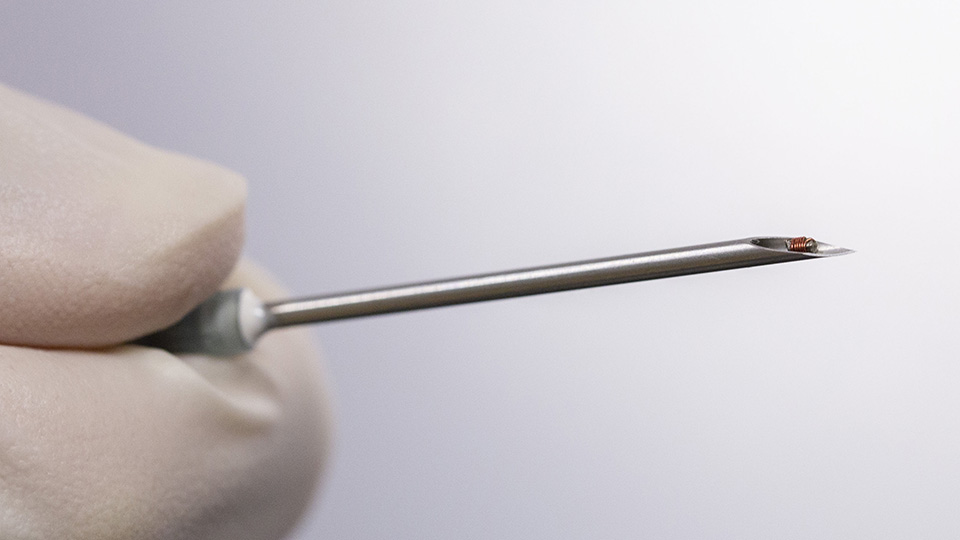- Home
- Editorial
- News
- Practice Guidelines
- Anesthesiology Guidelines
- Cancer Guidelines
- Cardiac Sciences Guidelines
- Critical Care Guidelines
- Dentistry Guidelines
- Dermatology Guidelines
- Diabetes and Endo Guidelines
- Diagnostics Guidelines
- ENT Guidelines
- Featured Practice Guidelines
- Gastroenterology Guidelines
- Geriatrics Guidelines
- Medicine Guidelines
- Nephrology Guidelines
- Neurosciences Guidelines
- Obs and Gynae Guidelines
- Ophthalmology Guidelines
- Orthopaedics Guidelines
- Paediatrics Guidelines
- Psychiatry Guidelines
- Pulmonology Guidelines
- Radiology Guidelines
- Surgery Guidelines
- Urology Guidelines
Tiny microsensor implants developed for 24 hrs health monitoring

Researchers at National University of Singapore (NUS) have developed tiny subcutaneous implants that can continuously measure a person’s blood sugar, heart rate and other physiological conditions. They have also developed a new wireless reader that is so sensitive to minute changes in a sensor’s readings that it enables the creation of sub-millimetre microsensors, tiny enough to be injected under the skin.
Current efforts to make these microsensors small have been largely hampered by technology limitations. These sensors are too small to be powered by a battery, so they require a sensor reader to be placed near them to constantly detect signals such as chemical or pressure changes using magnetic fields. For a reader to make sense of the signals, the sensor must be large enough to create a strong signal in the reader. So far, researchers have not been able to create viable microsensors below 1 millimetre.
The NUS team from the Department of Electrical and Computer Engineering at the NUS Faculty of Engineering and the NUS Institute for Health Innovation and Technology, led by Assistant Professor John Ho, developed a new way of measuring the signal, by calibrating the wireless reader to work at an exceptional point. This is a special state where the reader becomes extremely sensitive to nearby objects. The result is that the new reader is so sensitive – three times more sensitive than existing readers – that it can even read the tiny signals emitted by the sub-millimetre microsensors.
The team developed a working prototype of the reader that can read a microsensor that is 0.9 millimetres in diameter while implanted underneath the skin using a syringe. In lab experiments, the reader was able to monitor the rate of breathing and heart rate by detecting subtle movements of the battery-free microsensor.
It took two years of research by the team, from February 2017 to January 2019, to develop this innovative microsensor. The team’s achievement was published in August 2019 in the scientific journal Nature Electronics.
“We hope that our breakthrough will be a trailblazer for the future of minimally invasive health monitoring solutions where patients are immediately alerted whenever their physiological conditions such as heart rate and blood glucose cross a critical threshold,” said Asst Prof Ho.
“Now that we have proven the viability of our reader, the next step is to develop a suite of passive (battery-free) microsensors that can monitor various physiological parameters such as glucose, bioelectrical activity and blood chemistry,” he added.
Journal-Nature Electronics
Next Story
NO DATA FOUND

Disclaimer: This site is primarily intended for healthcare professionals. Any content/information on this website does not replace the advice of medical and/or health professionals and should not be construed as medical/diagnostic advice/endorsement or prescription. Use of this site is subject to our terms of use, privacy policy, advertisement policy. © 2020 Minerva Medical Treatment Pvt Ltd